

MARCH 2023 • Vol.11 • No.03 (ISSN 2564-1964) 21 15 30 40 Solving Labor Shortages - Matt DiBara, The Contractor Consultants How Companies Can Navigate The Tech Labor Shortage In 2023 And Beyond - Paul Burani, Tech Elevator Why Talent Diversification Is Key To Labor Participation - Julie Davis, Association of Equipment Manufacturers Adaptability: The Silver Bullet For Labor Shortages - Craig Goodliffe, Cyberbacker Themed Edition on Solving Labour Shortage THE FUTURE OF HR IS BEING FORGED NOW - John Doel, Human Capital Advisory Principal, KPMG LLP
Navigating
Temporary

Future Of HR Is Being Forged Now
demands for flexibility and
to attract and retain talent
KPMG LLP. 08 On the Cover Talent Acquisition Excellence MARCH 2023 Vol.11 No.03 Articles 24 The State Of Labor Shortage And Solving It With A Multifaceted Approach
strategies
remove barriers and create opportunities for your organization’s success
Tirath, Co-founder and Chief Executive Officer, Pyramid Consulting, Inc. 42 Why A Slow Economy Is The Right Time To Introduce Contingent Workers
The
purpose
- John Doel, Human Capital Advisory Principal,
Learn
to
- Sanjeev
work may outlast the downturn
Monica Plaza, Chief Strategy Officer, Wonolo 44 How To Improve Your Time To Hire
-
screening
onboarding - RJ Frasca, Vault Workforce Screening (ISSN 2564-1964) INDEX 18 Create A Compelling Employee Value Proposition To Attract Talent Exclusive Interview with Jeff Ostermann, Chief People Officer, Sweetwater 36 Strategies Companies Must Adopt To Address Labor Shortage Issues
Interview with Josh Secrest, VP Marketing & Client Advocacy, Paradox 11 How To Overcome Labor Shortages In Your Organization
7 ways to combat labor shortages - Brett Farmiloe, Founder and CEO, Terkel.io Straight Talk with HR.com Themed Edition on Solving Labour Shortage
Learn how background
can help improve
Exclusive
Learn
Solving Labor Shortages
Retention and meeting employee needs can solve labor shortages
 - Matt DiBara, Founder, The Contractor Consultants
- Matt DiBara, Founder, The Contractor Consultants
Top Picks 15 21
How Companies Can Navigate The Tech
Labor Shortage In 2023 And Beyond
Tech labor shortage persists despite widespread layoffs in news
- Paul Burani, Vice President of Enterprise, Tech Elevator
30
Why Talent Diversification Is Key To Labor Participation

It’s time to make changes and bring new and effective approaches to recruiting

- Julie Davis, Senior Director, Workforce and Industry Initiatives, Association of Equipment Manufacturers
40
Adaptability: The Silver Bullet For Labor Shortages
Organizational agility and flexibility is crucial for attracting and retaining highly skilled employees
- Craig Goodliffe, CEO, Cyberbacker
INDEX
Editorial Purpose
Our mission is to promote personal and professional development based on constructive values, sound ethics, and timeless principles.
Excellence Publications
Debbie McGrath CEO, HR.com - Publisher
Sue Kelley Director (Product, Marketing, and Research)
Babitha Balakrishnan and Deepa Damodaran Excellence Publications Managers and Editors
Talent Acquisition Excellence Team
Matt Charney Talent Acquisition Community Leader
Deepa Damodaran Editor
Arun Kumar R Design and Layout (Digital Magazine)
Vibha Kini Magazine (Online Version)
Submissions & Correspondence
Please send any correspondence, articles, letters to the editor, and requests to reprint, republish, or excerpt articles to ePubEditors@hr.com
For customer service, or information on products and services, call 1-877-472-6648
For Advertising Opportunities, email: sales@hr.com
Matt Charney Talent Acquisition Community Leader

Dear Recruiters:
For all the attention (and resources) recruiting and hiring leaders have dedicated these past few years towards eliminating bias, a disproportionate amount of the content and conversation in our industry so far this year suffers from one of the most pernicious, and pervasive, of all cognitive biases: the availability heuristic.
This basically means that we are overly reliant on immediate examples in framing our perceptions and influencing our decisions, which might be one of the reasons that so many of us in the talent acquisition industry view the current labor market with a mix of cynicism and existential dread.
This makes sense, since news of mass layoffs, hiring freezes and headcount reductions have largely dominated the headlines these past few weeks; from Meta to Amazon, from Google to Microsoft, it seems not a day goes by without another high-profile, blue chip brand announcing another round of RIFs or reorgs.
But the fact of the matter is that, despite the 106,000 layoffs in the tech industry so far in 2023, and the disproportionate number of recruiters impacted as a result (about half of all internal tech recruiters have been laid off in 2023, according to a recent report), we’re still in the midst of a historically robust labor economy, with unemployment at near record lows, and job creation - against all expectations - continuing to grow month after month.
In February, for instance, the US economy added 311,000 new jobs, and 87% of HR leaders reported having a positive outlook on hiring, despite layoffs and economic uncertainty, according to another recent study. This may be largely due to the fact that, even as the recessionary headwinds continue to swirl, American employers still have a staggering 10 million (that’s million, with an “m”) open jobs they’re unable to fill according to recent BLS estimates
Copyright © 2023 HR.com. No part of this publication may be reproduced or transmitted in any form without written permission from the publisher. Quotations
be
must
credited.
Talent Acquisition Excellence (ISSN 2564-1964) is published monthly by HR.com Limited, 56 Malone Road, Jacksons Point, Ontario L0E 1L0 Internet Address: www.hr.com
The truth is, FAANG companies and Silicon Valley scaleups aside, recruiters and employers are still struggling to fill open positions, and it’s no secret that a shortage of available talent remains the chief culprit, an endemic problem that’s gotten increasingly acute in the post-pandemic recovery.
Even as economic growth seems to be slowing, and companies become more and more cautious with their cash, job seekers continue to have the upper hand - an imbalance of power that a recent LinkedIn poll showed recruiting leaders expect to last for a minimum of 5 years, or about twice as long as the average US worker tenure today.
Solving the talent shortage, then, remains one of the most critical, and crucial, challenges facing talent acquisition today.
Which is why this special issue of Talent Acquisition
Excellence is all about what real companies, and real recruiters, can really do to help bridge the skills gap and survive - and thrive - despite the dramatic imbalance between available talent and mission critical work. The future of both the TA profession, and, more importantly, the entire global economy, depends on finding sustainable, scalable solutions to this most pressing and pervasive of people problems.
So, what’s the answer to the talent shortage?
Honestly, like everything else in recruiting, there’s no magic solution nor silver bullet. But as this month’s issue of TA Excellence shows, we do know that companies need to start thinking creatively and holistically about their hiring practices.
We need a fundamental shift in how we think about and approach talent, which is why in these pages, some of the industry’s most influential thinkers and impactful leaders lay out some of the ways that companies can roll up their sleeves, get to work and finally solve the talent shortage - and, optimally, reinvent recruiting in the process. Or, at least, make filling reqs just a little easier, and building pipelines and talent pools suck just a little less.
After all, in recruiting these days, that’s about all you can ask for.
Happy hiring,
Matt Charney Editor in Chief
Disclaimer: The views, information, or opinions expressed in the Excellence ePublications are solely those of the authors and do not necessarily represent those of HR.com and its employees. Under no circumstances shall HR.com or its partners or affiliates be responsible or liable for any indirect or incidental damages arising out of these opinions and content. Subscribe now for $99 / year And get this magazine delivered to your inbox every month Become a Member Today to get it FREE! SIGN UP OR EDITOR’S NOTE Write to the Editor at ePubEditors@hr.com
In a world of unparalleled challenges (global pandemic, racial injustice, political rivalry, digital 4.0, emotional malaise), uncertainty reigns. Finding opportunity in this context requires harnessing uncertainty and harnessing starts with reliable, valid, timely, and useful information. The Excellence publications are a superb source of such information. The authors provide insights with impact that will guide thought and action.

Excellence publications are my ‘go-to’ resource for contemporary and actionable information to improve leadership, engagement, results, and retention. Each edition offers rich and diverse perspectives for improving the employee experience and the workplace in general.





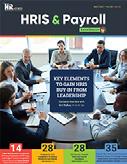

I regularly read and contribute to Leadership Excellence and Talent Management Excellence. I use many of the articles I read to augment my own presentations and I often share the articles with my clients. They are always quick, right on target for the latest issues in my field, and appreciated by my clients. If you want to stay up to date on the latest HR trends, choose a few of the different issues from the Excellence series of publications.




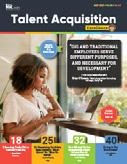

We’re eager to hear your feedback on our magazines. Let us know your thoughts at ePubEditors@hr.com

 Dave Ulrich
Rensis Likert Professor, Ross School of Business, University of Michigan Partner, The RBL Group
Dave Ulrich
Rensis Likert Professor, Ross School of Business, University of Michigan Partner, The RBL Group
WHY EXCELLENCE PUBLICATIONS?
Julie Winkle Giulioni Author, Virtual /Live Keynote Presenter, Inc.’s Top 100 Leadership Speakers
Dr. Beverly Kaye CEO, BevKaye&Co.
How are our Talent Acquisition Products and Services helping to make you smarter?

Talent Acquisition Excellence - Monthly Interactive Learning Journal
This monthly interactive learning experience captures key metrics, actionable items and keeps you focused on developing yourself and corporation as top leaders in the Talent Acquisition space.
Talent Acquisition Virtual Events


Talent Acquisition Virtual Events offer webcasts and demos on topics in any of the staffing related programs: Contract Workforce and Talent Exchanges, Online Staffing and Sourcing, Recruitment Process Outsourcing, or Quality of Hire. Learn how to bring the right staffing and recruiting programs into your organization and make them impactful. Listen to the world’s top thought leaders in the staffing industry as they help companies make decisions in all areas of staffing and recruiting. Each Virtual Event consists of up to 10 credit webcasts.
Talent Acquisition Webcasts for Credit
HR.com webcasts deliver the latest Talent Acquisition industry news, research trends, best practices and case studies directly to your desktop. Webcasts are available live online with a downloadable podcast and a copy of the slides (PDF) available before and after each webcast. Earn all of the required recertification credits for aPHR, PHR, SPHR, GPHR, and SHRM Certifications. HR.com’s one-hour webcasts, in every HR specialty including Talent Acquisition, are pre-approved for HRCI and SHRM credit (excluding Demo webcasts).
Talent Acquisition Community
Join almost 55,000 HR.com members with a similar interest and focus on staffing and recruiting topics with one of the four staffing related online communities: Contract Workforce and Talent Exchanges, Online Staffing and Sourcing, Recruitment Process Outsourcing, or Quality of Hire. Share content and download research reports, blogs, and articles, network, and “follow” peers and have them “follow” you in a social network platform to communicate regularly and stay on top of the latest updates. This well established Community is an invaluable resource for any HR professional or manager.
Use these invaluable Talent Acquisition resources today! For more information phone: 1.877.472.6648 | email: sales@hr.com | www.hr.com
The Future Of HR Is Being Forged Now
Navigating demands for flexibility and purpose to attract and retain talent
By John Doel, KPMG LLP
Even in the face of cooling wage pressure and rising unemployment, the talent shortage rages on. Human resources (HR) executives are struggling with the dual challenges of a job seeker’s market and structural labor problems that promise to last for years if not decades.
Among other factors, the Great Reconsideration is driving historical highs in the ratio of job openings to job seekers. Although there has been some improvement since last year when there were two open jobs for every worker, the country is still quite a distance from the one-to-one ratio needed to align labor demand with supply. At the same time, there is compelling evidence that the labor pool is shrinking.
(See sidebar)
Workers today are demanding remote working opportunities; learning paths and career growth; competitive compensation and benefits; and, perhaps above all, a sense of meaning and purpose in their work. If their employers fall short, many – particularly in the younger demographic – are looking elsewhere.
HR functions have to stay one step ahead of these challenges to attract, retain, and provide compelling reasons to consider their organizations. According to our recent Future of HR survey of 300 Chief Human Resources Officers (CHROs), 61 percent say they need to remain flexible with their Employee Value Propositions (EVPs) to the external labor market.
Talent shortages are not a passing challenge
In the wake of stagnant labor force growth between February 2020 and December 2022,1 workforce participation is expected to increase only 0.5 percent annually between 2021 and 2031, according to the Bureau of Labor Statistics.2
More than two million of the 3.5 million workers who have left the labor market are retirees, particularly Baby Boomers, according to the Federal Reserve Board.3 Considered alongside the fact that there are 1.5 million fewer prime-age workers than expected prior to the pandemic, a significant swath of the labor pool is unrecoverable.
Women’s labor force participation in the U.S. hasn’t fully rebounded from the pandemic, which was women’s lowest participation point in the past 30 years. 4
Talent Acquisition Excellence presented by HR.com MARCH 2023 8 Submit Your Articles
COVER ARTICLE
KPMG Economics
Statistics
KPMG Economics 3 KPMG Economics 4 KPMG Economics
Sources: 1
and Bureau of Labor
2
In addition to the EVP, our survey uncovered six key themes on which CHROs expect to focus over the next two years (click here to read the full survey report).
In this article, we provide insights on three of them -building talent marketplaces to support agile growth, integrating digital technologies to enhance the HR function and the employee experience, and making the organization’s purpose real.

The Talent Marketplace: A Fresh Approach to Workforce Shaping
HR professionals are realizing that the historical paradigm of matching people to jobs is giving way to models centered on aligning skills with tasks. Many are experimenting with talent marketplaces, which involve comprehensive datasets of the organization’s people and their capabilities, linked to an understanding of where and when those skills are needed across the organization. The skills-first
approach underpinning this model is being embraced by 46 percent of CHRO respondents to our survey.
One example of a company that has been an early adopter of the talent-marketplace model is biotechnology company Genentech. Genentech is one of the companies with an HR leader, who we view as a “pathfinder” who takes innovative approaches to emerging challenges. The company’s need for agility in the current economy led them to begin fluidly assigning people with the right skills to projects –which they call “gigs”.
In tandem with the talent-marketplace model, future-oriented HR practices are elevating learning and development to the same level as policies and compensation. Remote and hybrid work models have largely erased ad-hoc learning and, to some degree, human-to-human collaboration. This has increased the need for CHROs to advocate for targeted career development activities that will ultimately enrich the talent marketplace, as employees pursue career paths even within a more transactional model.
Talent Acquisition Excellence presented by HR.com MARCH 2023 9 Submit Your Articles
The Future Of HR Is Being Forged Now
The Digital HR Function: A Means to a Better Employee Experience
Given the competitive labor market, HR professionals recognize that legacy technology solutions and processes can be off-putting to today’s employees and prospects. Therefore, they prioritize creating consumer-grade, seamless working environments that are tailored to employees and driven by data and the latest digital technologies. Thirty-nine percent of CHRO respondents to our survey said digitalization was a top area of focus for the next three years.
Over the past two years, many technology investments were made reactively to facilitate remote work. However, many of these solutions had a relatively small impact on productivity and employee experience. Companies are now shifting to a more strategic mode and intentionally building upon this foundation to get more value from advanced technologies. Digitally driven workplaces allow for automation of administrative tasks; seamless integration of information across platforms; predictive staffing analytics; and people analytics to better understand the employee experience.
The good news is that 39 percent of CHRO respondents to our survey said digitalization was a top area of focus for the next three years. Although this commitment is encouraging, it is worth noting that only 10 percent said they can deliver on this imperative today. Clearly, there is work to be done.
The Purpose-driven Organization: A Key Commitment for Attracting Talent
Forward-thinking HR leaders are committed to organizational purpose. They engage their employees in environmental, social and governance (ESG) programs, including net-zero strategies and robust diversity equity and inclusion (DEI) programs.
Although 60 percent of the respondents to our recent CEO Outlook Survey say they are considering pulling back on ESG and DEI commitments during the economic downturn, faltering on these pledges could exacerbate the talent shortage. Younger workers view sustainable DEI and ESG programs as non-negotiable aspects of the employee value proposition (EVP).
In this regard, HR leaders are functioning as marketers – ensuring that the employment brand remains strong and advertising the “why join this firm” value proposition. Encouragingly, 57 percent of CHRO respondents to our survey said ESG and DEI would remain top areas of focus for the next three years.
Electric truck company Tevva imbues its purpose in the fabric of the organization. The company hopes to expand its net-zero aspirations beyond its own trucks by working with suppliers and customers on more environmentally friendly ways to package and transport their materials. The company’s HR function, led by another pathfinder, is at the forefront of these efforts, ensuring that job candidates align with the company’s mission and holding managers to a high standard in terms of evangelizing the purpose and making decisions that align with the company’s values.
Conclusion
In a time when staffing shortages and the Great Reconsideration are making it more difficult than ever to attract, recruit, and retain employees, HR leaders have a critical role to play in ensuring the right talent is in place to bring their companies into the future. They can encourage senior leaders to support new models of workforce shaping like the talent marketplace.
They can guide their organizations in the integration of digital technologies that enhance HR effectiveness and employee experience. And they can play a key role in ensuring that the company’s purpose is “real” and meaningful to employees. These and other progressive initiatives will help HR professionals guide their organizations from flux to a state of genuine flow.
John Doel is Human Capital Advisory Principal at KPMG LLP
Would

you like to comment?
Talent Acquisition Excellence presented by HR.com MARCH 2023 10 Submit Your Articles
The Future Of HR Is Being Forged Now
How To Overcome Labor Shortages In Your Organization
Learn 7 ways to combat labor shortages
By Brett Farmiloe, Terkel.io
Fromfocusing on employee retention to constructing a robust succession plan, here are 7 answers to the question, “HR leaders, how did you overcome a labor shortage at your organization?”
● Don’t Forget About Employee Retention
● Foster a Positive Work Culture
● Offer Remote Positions
● Increase Compensation and Benefits
● Go Past Skill Requirements and Hire for Behavioral Fit
● Upskill Your Current Workforce
● Create a Robust Succession Plan
1. Don’t Forget About Employee Retention
I cannot stress the importance of employee retention during a labor shortage enough. While being proactive in recruitment efforts is essential, taking care of the talent you already have is equally important. Losing employees due to the labor shortage can be a significant setback for any organization - those employees are already productive team members.
Piotrek Sosnowski, Chief People and Culture Officer, HiJunior
With a labor shortage, it is easy for employees to feel overworked and overwhelmed, especially when they are picking up the slack for vacant positions. Providing support, resources, and additional training can help them feel more confident and capable, reducing the likelihood of burnout and turnover.

Talent Acquisition Excellence presented by HR.com MARCH 2023 11 Submit Your Articles
Tony Deblauwe, VP Human Resources,



2. Foster a Positive Work Culture
Prioritizing a positive work culture can help overcome a labor shortage by increasing employee retention, motivation, and productivity. The best tip is to start with building a strong team by hiring and training employees with the skills and qualities that align with the company’s values and mission. This alignment on a personal level makes it easier for people to succeed, and to prioritize teamwork and collaboration.
3. Offer Remote Positions
We found that one of the strongest deterrents to applicants accepting a position was having to come to the office. Great candidates were being lost because of an old-age ideal in the workplace.
I sat down with our CEO and explained that we would have access to a greater talent pool and reduce our labor shortage by offering remote positions. We tried it and, voilà, we have been able to fill many open positions in our company.
4. Increase Compensation and Benefits
Timothy Allen, Sr. Corporate Investigator, Corporate Investigation Consulting
In my opinion, providing attractive pay and benefits is a key factor in attracting and retaining top talent. If your company is experiencing a labor shortage, try raising wages, offering bonuses, and providing health insurance, retirement benefits, and other benefits. I believe you will be able to motivate employees to stay with your organization or join your team by doing so.
Celigo
Talent Acquisition Excellence presented by HR.com MARCH 2023 12 Submit Your Articles How To Overcome Labor Shortages In Your Organization
Jarir Mallah, HR Specialist, Ling App
5. Go Past Skill Requirements and Hire for Behavioral Fit
My recommendation for companies dealing with labor shortages is to look for people with skill sets that are outside of the norm for the position they are hiring for. Rather than specific experience or skills, focus more on hiring for attitude or behavioral attributes for the correct type of people they want to bring to their organization.

To support this, they should have a strong learning and development program or training program with onboarding guidance, continuous training, and regular check-ins to get people the skills they want for the roles they are having a shortage around. A lot of times, that will be something that the new people are excited about because most people want to learn new skills.
They want to be invested in their company, and sometimes they just need to be given a chance, an opportunity. If they are dealing with a shortage, it is a great opportunity to bring in people who are a little more outside the box than the traditional profile they might hire for.
6. Upskill Your Current Workforce

Invest in employee training and development programs to increase their skills and knowledge. This can help employees take on new roles and responsibilities, and fill in gaps in your workforce.
This involves investing in the development of your current employees’ skills, knowledge, and abilities. This can help them take on additional responsibilities, learn new technologies, and adapt to changes in the business environment. Upskilling can also help you fill gaps in your team caused by labor shortages and reduce the need to hire new employees.
You can improve employee engagement and retention, increase productivity and efficiency, and adapt to changes in the business environment. This can be more cost-effective than hiring new employees with the required skills.
How To Overcome Labor Shortages In Your Organization
Evgeniya Aleksandrova, Human Resources Director, Hypetrain
Talent Acquisition Excellence presented by HR.com MARCH 2023 13 Submit Your Articles
Oz Rashid, Founder and CEO, MSH Talent Solutions
7. Construct a Robust Succession Plan

One of my favorite sayings for working in a field or organization with a labor shortage is “grow your own crop.” If you create a system or strategy where you continue to build new potential, you do not have to fear labor shortages.
A robust succession plan predicts the labor shortages that will come up in years ahead and prepares for them by strategically grooming team members to fill those gaps.

Observe the gaps and lack of skills, invest in training to bring the technical skills up to speed, and then cover knowledge transfer through shadowing and other side-by-side knowledge-sharing strategies.
Brett Farmiloe is the Founder and CEO – and currently CHRO - of Terkel.io. Brett is an SHRM Influencer and has also been a keynote speaker at several state SHRM conferences around the topic of employee engagement.”
Would you like to comment?

How To Overcome Labor Shortages In Your Organization Talent Acquisition Excellence presented by HR.com MARCH 2023 14 Submit Your Articles
Tiersa Hall, CEO, Tiersa Hall
Solving Labor Shortages
Retention and meeting employee needs can solve labor shortages
By Matt DiBara, The Contractor Consultants
TheCovid-19 pandemic presented an interesting challenge for employers and employees alike. As shutdowns began, many workers found themselves furloughed — or even out of the job — when businesses shuttered their doors temporarily or permanently. However, the pandemic had another interesting effect: a significant increase in the number of startups
Now that there are more businesses, people are needed to staff them. As such, we face a unique situation in which there are significantly more open positions than people to fill them. This has had a ripple effect throughout the workforce, with older employees aging out of the system or retiring early due to the pandemic, leaving younger employees the opportunity to fill their spots and creating a void where those younger employees would have worked.
In this market in which we find ourselves, much of the negotiation power lies in the hands of employees, not employers. Employers must be prepared to make some concessions if they want to fill out their workforce, even if it means sacrificing some qualities they had been looking for or paying a higher salary for a fully qualified candidate.
Using Retention to Combat the Labor Crisis
One of the first things a company should do to combat this labor shortage is to focus on retention. After all, there will be no struggle to find new candidates if current employees stay in their positions. However, given the number of jobs currently available, workers
often have the freedom to leave their current job in favor of a position at another company that will treat (and pay) them better.
The key to retention is to give employees what they want and need from their position and workplace. There is no better way for an employer to get insight into their workplace’s needs than to ask them directly. Business leaders must be open to employee feedback at all levels and create an environment conducive to transparency and meaningful conversations. Doing this will create a culture of respect that is necessary for employees to feel comfortable in the workplace.
Many employees are looking for their employers to improve their work environment, including the aspect of increased flexibility. Covid presented the reality that many jobs can be completed as efficiently — if not more — in a remote or hybrid environment as they can be in an office. Several studies have shown that employees are willing to leave their company if remote work options are ended, so employers must maintain the availability of these options to retain employees.
Additionally, employees have come to expect even more extensive benefits than in the past. While competitive pay is an absolute necessity for retention, there are other benefits that have become the new bare minimum. Most employees today expect a minimum of a solid healthcare plan, generous PTO options, and 401k matching. Employers can go above and beyond with more unique benefits like tuition reimbursement, in-office amenities, and more to make their workplace stand out to current and prospective employees.
Top Pick Submit Your Articles Talent Acquisition Excellence presented by HR.com MARCH 2023 15
Filling Labor Needs in Unique Ways
Once a workplace is transformed into something desirable for employees, setting up an employee referral program can be a wonderful way to attract like-minded candidates. By making your workplace one that employees are proud to work at, they will be more likely to brag to their friends and make them want to work there, as well.
If you offer a financial incentive for referrals — such as a small cash bonus or other perks after a referred employee hits 90 days — this could be a bountiful source of legitimately great employees.
Companies can also look to their existing workforce to fill labor needs. Investing in further training for employees and even cross-training can fill staffing shortages in similar departments where an employee’s skills can be put to good use. In addition to filling a business’s staffing needs, this strategy benefits employees in that it can provide them with better career development opportunities and potentially help them negotiate for more pay.
Although some companies have found success in filling their labor needs by changing their recruiting practices, the truth is that it’s harder than ever for businesses to find competitive candidates that meet all their desired qualifications upfront. Companies must not expect candidates to be perfect from the start, but rather invest time and money into teaching them the necessary skills once they join the company. Reducing standards in the hiring process can allow the candidate pool to become much wider.
Another ambitious solution that some businesses have tried to solve the labor shortage is the use of automation. Of course, there are some industries in which automation isn’t practical, but the use of AI has shown the potential to fill many gaps left by shortages of human workers. Those workers who remain in the organization can transition to more skilled roles, overseeing or supplementing the work of the automated system.
The post-Covid labor shortage has presented a significant obstacle to businesses across all sectors, but its challenges can be overcome with the right strategy. The key to successfully weathering the labor shortage is to create a workplace that caters to the needs and desires of current and prospective employees — making it more conducive to retention.
 Matt DiBara is Owner of DiBara Masonry, and Founder of The Contractor Consultants
Matt DiBara is Owner of DiBara Masonry, and Founder of The Contractor Consultants

Submit Your Articles Talent Acquisition Excellence presented by HR.com MARCH 2023 16 Solving Labor Shortages
Would you like to comment?
Talent Acquisition Epublication
Best-in-class education for all your learning and training needs
HR.com prepares HR leaders to be strategic business leaders by curating and delivering best-in-class products and services so you don’t have to waste time seeking out content on your own. We leverage technology and experience to provide you with customized solutions to best meet your professional development needs at every stage of your career.
From on-demand to cohort-based offerings, below is a listing of virtual courses that will challenge and empower you by giving you the tools to drive innovation and success in your organization.
The Candidate Experience Certificate of Learning
This program focuses on recruiting and hiring and the candidate experience. This comprehensive program is based on 10 years of recruiting and hiring benchmark research.
Becoming an Employer Brand Practitioner
Optimize and leverage your brand to attract the right talent! Learn how to understand and present the whole picture of your employer brand with this on demand course.
Employee Selection
Introductory-level course: learn about the process of selecting the best candidate from a large, diverse pool of high-quality applicants.
Introduction to Human Resource Management
Human Resource Management Course includes understanding the vital tasks of recruiting, screening, interviewing, training, appraising, disciplining, rewarding, and developing the employee—both for business and non-profit enterprises.
Gain
access to more expert-led courses.
Would you like to comment?
At HR.com, we are committed to educating and inspiring HR professionals and helping them build meaningful and impactful careers. With products and resources rooted in education, research, and leveraging cutting-edge technology, we help at every career stage - and over 1.92 million HR pros agree! (How could that many people be wrong?) By delivering best-in-class learning products, 250+ annual webcasts and 30+ world-class events, and innovative and thought-provoking research through the HR Research Institute, HR.com strives to inspire and strengthen workforces to change the world. HR.com also offers the most comprehensive HR certification exam preparation and guarantees a passing score on all SHRM and HRCI certification exams. Technology and experience drive our customized solutions that will help you become the best and most successful version of yourself.
Talent Acquisition Excellence presented by HR.com MARCH 2023 17
Create A Compelling Employee Value Proposition To Attract Talent
“Companies need to get even more proactive and creative in their outreach. Gone are the days when expecting a job posting to bring in the right people for skilled work was a successful strategy. Hiring skilled TA specialists that have the ability to connect, build bridges with candidates, and function as gifted salespeople of the organization is critical, said Jeff
Ostermann, Chief People Officer, Sweetwater

In an exclusive interview with HR.com, Jeff emphasizes the need for companies to create a compelling employee value proposition to attract and retain talent amidst labor shortages. He suggests that companies should focus on cultivating a culture that emphasizes pursuing a noble mission and caring for the whole human. Jeff also discusses the importance of being proactive and creative in outreach, as well as the challenges of hiring foreign workers and the need for streamlined immigration processes.
Q.Amidst low unemployment and skilled labor shortages, how should companies fix labor shortage problems?
Jeff: Attracting team members always starts with creating an environment in which employees want to work. While talent challenges are very real, some companies struggle because they quite simply have not created an environment that allows them to stand out from others as a preferred employment destination.
Employers must ensure they have the basics covered, like competitive compensation and benefits. However, after this, they need to focus on cultivating an overall culture that places an emphasis on both pursuing a noble mission and caring for the whole human. The formula is not complicated – give people a worthy cause to pursue, wrap the right levels of support around them, and reward them for making meaningful contributions.
Talent Acquisition Excellence presented by HR.com MARCH 2023 18 Submit Your Articles
Straight Talk with HR.com
Q&A with Jeff Ostermann, Chief People Officer, Sweetwater
Q.Whatchanges are required in the current approach to TA and sourcing to solve the talent crunch?
Jeff: Companies need to get even more proactive and creative in their outreach. Gone are the days when expecting a job posting to bring in the right people for skilled work was a successful strategy. Hiring skilled TA specialists that have the ability to connect, build bridges with candidates, and function as gifted salespeople of the organization is critical. Even though TA can be aided by new technologies and tools that make their work more efficient, there is simply no replacing the human element.
Q.To what extent will new TA/ recruitment technology help HR alleviate labor shortage challenges?

Please elaborate.
Jeff: Newer tools do allow us to efficiently locate and connect with candidates that meet our hiring needs. However, I believe that new technology is not necessarily the critical pathway to meeting labor needs. Getting the best people simply comes back to creating compelling employee value propositions that allow your company to win in a more competitive talent marketplace.
Talent Acquisition Excellence presented by HR.com MARCH 2023 19 Submit Your Articles
Straight Talk with HR.com
Q.What has been your strategy to ease the labor shortage issues?
Jeff: Fortunately, Sweetwater has not been adversely affected by national labor shortage issues. This is because we have long been focused on creating an environment that attracts and supports our team members. Beyond competitive pay and benefits, we cultivate a purpose-filled environment focused on helping our customers make their musical dreams come true, provide support for professional development through tuition reimbursement and our in-house L&D programs, and offer a destination work environment that includes things like a free medical clinic for employees and their families, free fitness center with a personal trainer and free on-site confidential mental health counseling and support. We are always continually looking at options to further enhance our offerings.
Q.What are some of the legal and compliance challenges companies face while hiring foreign workers?
Jeff: Certainly, the sponsorship process can be somewhat time-consuming and complex to navigate.
Q.How should the U.S. immigration laws and rules ease to help companies meet their labor demand in 2023 and beyond?
Jeff: Simplifying and streamlining the process for companies to bring in highly talented workers is always something that should be diligently considered. Would you like to comment?

Talent Acquisition Excellence presented by HR.com MARCH 2023 20 Submit Your Articles
Straight Talk with HR.com
How Companies Can Navigate The Tech Labor Shortage In 2023 And Beyond
Tech labor shortage persists despite widespread layoffs in news
By Paul Burani, Tech Elevator
Techtalent remains highly sought after—perhaps now more than ever.
But you might be wondering how that can be true.
If the headlines were an accurate indicator, the entire tech industry would be crumbling. Former software developers would be filling the unemployment offices as they sent hundreds of resumes to no avail.
However, in reality: The mass layoffs that have been publicized are limited to a handful of companies. Naturally, these make for attention-grabbing headlines. But if you view them cumulatively and holistically, it is a drop in the bucket compared to the overall state of the tech labor economy.
Of course, that is not to say layoffs are not happening — but that overall the sector is healthy. It is easy to think that tech companies are the bulk of employers for tech talent – but tech-adjacent industries, such as banking, travel, retail, hospitality, and healthcare (and beyond), all consume software development talent. While they may not be the first to come to mind, they
are still hiring, and the labor shortage is a significant problem for them.
In fact, the global tech shortage and the demand for software developers across all industries will continue to grow over the next decade with a predicted shortage of over 85 million tech workers by 2030.
And according to a quote from DAXX on the global talent shortage and why now is a great time to be a developer: “The latest U.S. labor statistics bring major concerns about the talent shortage: by the end of 2020, there were 1.4M unfilled CS jobs. Meanwhile, the number of graduates is only 400,000 a year. The U.S. is at risk of facing an unrealized output of $162B if the country’s software developer shortage keeps growing at the same pace. Business development and digital transformation are impossible without new talent, which intensifies the gap between tech talent supply and demand.”
They are not the only ones coming to this conclusion. Even after layoffs, the first quarter of 2023 saw an average of over 700,000 open software development jobs.
Top Pick Submit Your Articles Talent Acquisition Excellence presented by HR.com MARCH 2023 21
Despite this, many of the industries suffering from the shortage are at a loss for how to solve it. Filling an empty seat is costly in terms of direct costs, opportunity costs, productivity lost while the position is empty, and time; all of which are resources and investments that may not ever provide a return if the candidate were to leave shortly after. Fortunately, those are not the only options, and there are a number of successful examples that we can look to for guidance.
How to Solve the Shortage without Paying a Large Percentage to Costly Recruiters
Reskilling: Organizations can look to reskilling to fill their open tech roles; reskilling an internal hire can be done for as little as one-sixth the cost of hiring an external candidate.
But beyond up-front cost savings, reskilling can also act as an insurance policy for attrition. Talent acquisition is expensive, and research suggests that a lack of internal mobility and career opportunity is a significant driver of attrition. When people fail to
see a career path, they feel like their company is not invested in their learning and development and, in turn, they report less commitment and higher intent to leave.
Reskilling builds an internal pathway toward mobility and simultaneously creates a complementary pipeline of talent — while mitigating the risk of losing employees.

A loss of retention is more than lost money; empty seats mean more missed deadlines, and missed campaign launches, and can lead to other negative cross-functional impacts. This is when attrition becomes more than just an HR issue — it begins to affect the whole company.
Further, a robust and impactful reskilling program can elevate your employer brand. Only one in five employees see the opportunity for internal mobility within their company. It can be a differentiator and a proven way to demonstrate commitment to wellness and growth within the workforce, while also facilitating enriched diversity within teams.
Submit Your Articles Talent Acquisition Excellence presented by HR.com MARCH 2023 22
How AI And Automation Are Evolving Talent Acquisition Roles
Look at the Companies That Are Already Doing This
Verizon’s reskilling program is an extension of their corporate culture, shows their commitment and care for their employees, and builds their brand authenticity by aligning their values with their actions.
Meanwhile, Walmart committed to investing nearly $1 billion over the next five years in career-focused training and development, furthering its efforts in supporting career advancement and mobility.
Tech Elevator’s partnership with KeyBank has been a point of pride for both organizations. To date, KeyBank has sent more than 80 students through the Tech Ready program and has experienced 100% employee retention. What’s more, these employees are securing higher-paying, future-proof roles, earning up to $30,000 more after graduation. Your organization could be next.
Skills-based hiring: More companies are dropping college requirements in favor of skills and competencies, which is a step in the right direction and is certain to continue.
Organizations like Google, Bank of America, General Motors and IBM have already removed their four-year degree requirements in favor of demonstrated skills hiring.
With 58% of adults aged 18 to 29 reporting student loan debt, the value of a college degree is increasingly coming under question. Amidst a growing student debt crisis, many are turning to other viable education and training options, such as coding bootcamps.
A recent Harvard Business Review article has described the “new-collar worker” title as a signal of respect for workers who do not have a college diploma, but are just as talented and capable as their degreed counterparts.
Many companies are missing out on a large sector of talent by requiring degrees, and opening these pathways could help organizations fill critical roles, while also helping them to meet diversity goals and
support economic equality. Researchers have noted that the highest proportion of candidates without degrees are Indigenous populations (80%), Hispanic or Latinx populations (79%) and Black Americans (72%). Using degree requirements to filter out candidates when it’s unnecessary for the role is not only excluding diverse and nontraditional candidates — it is also inefficient hiring.
The “skills first” approach looks different across companies. While some are writing capability-focused job descriptions, others are offering apprenticeships, internships and training programs for candidates without degrees. Similarly, the emerging job seeker category known as STARs (Skills Through Alternative Routes) aligns to the idea that you don’t need a degree to perform and excel in some jobs and recognizes that a lot of Americans simply don’t have degrees.
There are many alternative routes to education in 2023, making it no surprise that skills-based hiring is now surging in popularity.
Traditional streams of talent can no longer accommodate the speed at which technology is changing the needs of corporations across industries. Organizations have the responsibility to distribute opportunity equitably, but often lack proven methodologies to create impactful change.
Paul Burani is Vice President of Enterprise at Tech Elevator. He is passionate about connecting talented individuals to rewarding opportunities in the modern workforce. After years of experience in marketing, sales and entrepreneurship, he found his calling in building talent pipelines for organizations seeking to future-proof their technology teams.
Would you like to comment?

Submit Your Articles Talent Acquisition Excellence presented by HR.com MARCH 2023 23
How AI And Automation Are Evolving Talent Acquisition Roles
The State Of Labor Shortage And Solving It With A Multifaceted Approach

Learn strategies to remove barriers and create opportunities for your organization’s success
By Sanjeev Tirath, Pyramid Consulting, Inc.
The lockdowns imposed during the Covid-19 pandemic led to chaos in the labor market and flung the unemployment rates to record highs. The Bureau of Labor Statistics reported that in July 2020, shortly after the outbreak, 16.9 million people became unemployed - out of which 9.6 million people lost their jobs as their employers closed or lost business due to the pandemic.
However, things have taken a massive turn as time passed by. Now, the world is struggling with a massive
labor shortage, and countries are unable to find skilled workers to fill open vacancies across industries.
As per the U.S. Chamber of Commerce, the country had 11 million job openings in December 2022. The report adds there were almost 5.7 million unemployed people during the time. It means that even if every unemployed worker was hired, the country would still have more than 4.5 million open jobs left.
Talent Acquisition Excellence presented by HR.com MARCH 2023 24 Submit Your Articles
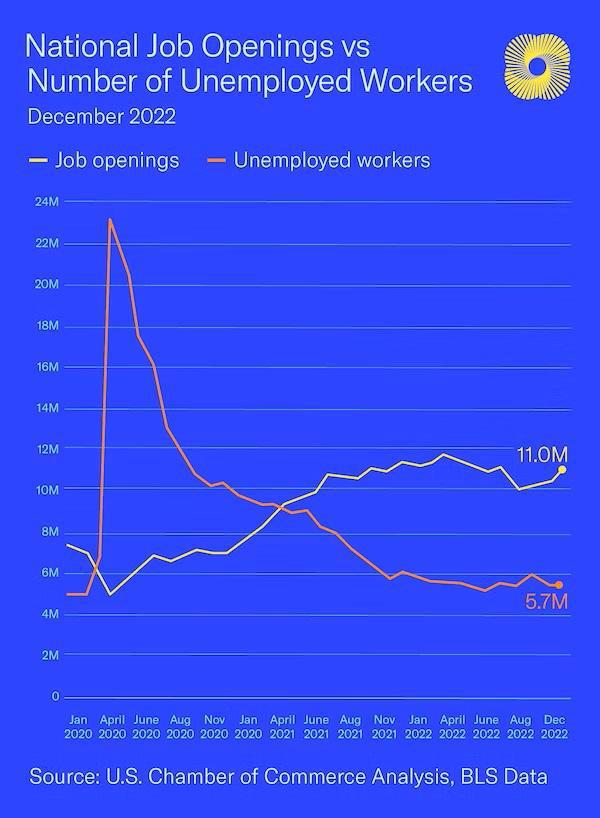
Talent Acquisition Excellence presented by HR.com MARCH 2023 25 Submit Your Articles The State Of Labor Shortage And Solving It With A Multifaceted Approach
Image Courtesy: U.S. Chamber of Commerce
Just like the US, the United Kingdom also had a record-high number of job vacancies. For instance, there were 1.3 million job openings in the UK in May 2022 Similarly, the Australian Bureau of Statistics reported 444,200 job vacancies in the country in November 2022. Moreover, the manufacturing hub of the world – China, also indicated a massive labor shortage. The country’s Ministry of Education forecasted a shortage of almost 30 million manufacturing workers by 2025 – a number bigger than the total population of Australia.
These figures are just the tip of the iceberg about the world’s labor shortage turmoil. But what exactly are the reasons for this unprecedented shortage of workers? Here are some insights.
● The Covid-19 pandemic caused massive immigration disruptions. Moreover, it made people rethink their lives and prioritize their physical and mental health. It also led to a shift in workers’ expectations - who now long for improved work-life balance, enhanced flexibility, and increased compensation in their jobs. This led to mass resignations - an event referred to as The Great Resignation or The Big Quit.

Talent Acquisition Excellence presented by HR.com MARCH 2023 26 Submit Your Articles
The State Of Labor Shortage And Solving It With A Multifaceted Approach
Image Courtesy: U.S. Chamber of Commerce
● Employees are leaving their current jobs for better opportunities, higher wages, and improved benefits. This scenario has led to a conflict as companies are unable/unwilling to meet the increased demands and prioritize covering the cost of high inflation.
● Many people left their jobs to start businesses in the spirit of entrepreneurship. For instance, nearly 4.4 million new businesses were created in the U.S. alone during 2020, and half a million new businesses were started in January 2021.
● Increased integration of modern-day technologies like artificial intelligence and automation has subsequently increased the demand for skilled people who understand these complex techs. Unfortunately, the world is leveraged with skill gap issues which have played its part in spurring the labor shortage. As per Mckinsey, 87% of companies worldwide admit they have a skills gap, or will have one in the coming years.
● The aging workforce is one of the most significant contributors to the ongoing labor shortage. For instance, 10,000 people reach the retirement age of 65 in the US alone As per the World Health Organization, 1 in 6 people in the world will be aged 60 years or over, and the world’s population (of people aged 60 or above) will reach 1.4 billion in 2030.
Businesses are struggling to retain their employees with 3.9 million people in the US alone quitting their jobs in January 2023 and 61% of US employees considering resigning in 2023 Another report suggests that if left unchecked, the global human talent shortage may reach 85 million people and $8.5 trillion in unrealized annual revenues by 2030. The situation is becoming alarming each day, and we need to make a move now!
The Multifaceted Approach to Remove Barriers and Create Opportunities Amidst Talent Shortage

The ongoing labor shortage cannot be solved with a single solution – surely not at the global level. Each country has its own geographically and demographically governed challenges, and one solution cannot work for all. However, organizations can work on individual levels to make an impact and move toward a fully staffed workforce with a multifaceted approach.
1. Time for leadership to step up
The role of leadership becomes even more important to tackle challenges like labor shortages. A leader is someone who knows the way, goes the way and shows the way. Thus, they need to step up and drive changes to retain their best people while recruiting more top talent.
2. Reimagine organization culture
Organizations need to reimagine and invest in their company cultures to foster a place where employees feel safe, valued, and motivated. Moreover, organizations should start acknowledging the fact that employees are an asset (and an investment), and not an expense. A great culture also gives a boost to employee referral programs.
3. Reengineering employee relationships
The labor shortage is surely one of the biggest challenges for the business world in modern history.
During the pandemic, the personal and professional lives of the employees collided which completely changed the game. And thus, arises the need for reengineering employee relationships. Employees now look to work with employers who prioritize the human approach, focus on employee growth and development, offer targeted training, and personalize their job search approach. This
Talent Acquisition Excellence presented by HR.com MARCH 2023 27 Submit Your Articles
The State Of Labor Shortage And Solving It With A Multifaceted Approach
4. Close the skill gap
The skill gap is one of the contributors to the labor shortage and needs to be dealt with urgently. Regular training and upskilling opportunities, mentoring and coaching, and ensuring on-the-job learning are some of the most effective strategies that can help in closing the skill gap. Integrating technology is crucial to enhance operational efficiency, but utilizing multiple tactics for closing the capability gap is equally important.
5. Innovate your recruitment
An innovative recruitment strategy is crucial to finding and hiring the right people in the tight job market. The recruitment process directly impacts hiring and people management. A good and effective onboarding experience increases the chances of your candidate joining the organization. For instance, consider making your recruiting process easy and quick. The best candidates are off the market in a matter of days, especially when the market is tight. Thus, you need to act fast!
The labor shortage has created a candidate-driven market. Workforce preferences have changed,

and employees demand enhanced benefits as part of the overall compensation packages. Apart from competitive salaries, they ask for a healthy work-life balance, job security, and considerate work environments. Thus, companies need to overhaul their strategies and build an employee-friendly culture to attract talent while retaining their existing workforce.
Sanjeev Tirath is the Co-founder and Chief Executive Officer of Pyramid Consulting, Inc. He is a recognized leader who is laser-focused on business growth, improving the sourcing, recruiting, and hiring process with smart technologies, and people. He was recently named to the prestigious SIA Staffing 100 North America List and made it to the finalist list of the EY Entrepreneur of The Year® 2021. Prior to starting the company, Sanjeev held senior management roles for several leading software consulting firms, including Wipro, TCS, and Unisys.
Would you like to comment?

Talent Acquisition Excellence presented by HR.com MARCH 2023 28 Submit Your Articles
The State Of Labor Shortage And Solving It With A Multifaceted Approach

Talent Acquisition Excellence presented by HR.com MARCH 2023 29 Submit Your Articles ePublication EditorialCalendar2023 Checkoutthenewandupcomingthemed HRtopicsinTalentAcquisitionExcellence Check ePublications Editorial Calendar Here. Would you like to submit an article? | Write to us at ePubEditors@hr.com Submission Guidelines 1 Sourcing & Candidate Engagement Jan 2023 2 The State of Contingent Work Feb 2023 3 Solving Labour Shortage Mar 2023 4 Recruitment Advertising Apr 2023 5 Pre-Hiring Tools May 2023 6 Interviewing, Screening and Social Profiling to Improve Quality of Hire Jun 2023
Why Talent Diversification Is Key To Labor Participation
It’s time to make changes and bring new and effective approaches to recruiting
By Julie Davis, Association of Equipment Manufacturers
If you feel like there are fewer workers to be found these days, rest assured, you are correct.
A decrease in the rate of births, declining since the 1970s, coupled with decreasing labor market participation, more job openings, a shortfall of immigrants and a surge of retirements, is creating a workforce problem that is hard to ignore.
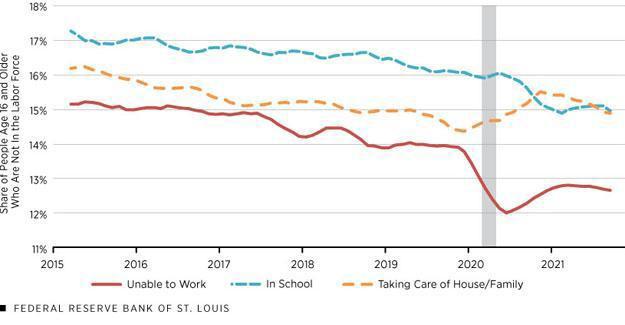
Although we continue to experience the challenge, many of us still cling to the flawed idea that continuing to do what we have always done will somehow, some way, finally yield positive results.
So, for those of you who need a bit more convincing, let us take a look at the data, create some urgency around why you need to make some changes and then talk about potential new and effective approaches to recruiting.
The Numbers Don’t Lie
We need over 2 million more people in the labor force to recover to the 63.4% labor force participation rate we had in February 2020, just prior to the beginning of the Covid-19 pandemic. We also need 175 million more people in the labor force to just bring us back to the number of people who were working at that time.
Submit Your Articles Talent Acquisition Excellence presented by HR.com MARCH 2023 30
TOP
PICK
The labor force participation rate is only a measure of currently employed individuals and people actively seeking work (unemployed). If you are sitting on the sidelines, as an estimated 40% of our total population is right now, and you have chosen not to work or have just given up looking for a job, you are no longer being counted as unemployed. So, what are the most common reasons people are on the sidelines? The major ones are as follows: retirement, school, family caretaking and being unable to work.

Employment Opportunities Are Plentiful
The job market is currently booming, with millions more jobs available than there were prior to Covid-19. As I write this, there are just over 10 million job
openings (an increase of 3 million jobs from February 2020). This chart shows the ever-growing number of jobs available across all industry sectors.
The takeaways here should be evident. Your opening is not only competing with others in your industry, but also with all the interests, skills and talents one person has that overlap with every open position. There are many more opportunities to change career paths and just try something new.
According to the U.S. Bureau of Labor Statistics, the average term workers stay with their respective job is four years. However, for those younger than 35, that average drops to 2.8 years.
Submit Your Articles Talent Acquisition Excellence presented by HR.com MARCH 2023 31
Why Talent Diversification Is Key To Labor Participation
Immigration May Not Be a Long-term Solution
Many companies are looking to immigration to help offset their labor challenges. It is a hedged bet, however, and one that may help only in the short run. Consider the fact that net international migration is decreasing.
Birth rates in many countries, from where we get immigrant workers, are slowing, and unemployment is low. The onset of Covid-19 and advancement of restrictive immigration policies resulted in a sudden drop in our immigration numbers. At the beginning of 2022, we were running 2 million immigrants short of the trend taking place prior to 2019, the restaffing of immigration offices has allowed us to make up much of the lost ground. However, the past two years have shown the fragility of planning on immigration to close workforce gaps.

Submit Your Articles Talent Acquisition Excellence presented by HR.com MARCH 2023 32
Why Talent Diversification Is Key To Labor Participation
Retirements Can’t Be Overlooked
The other workforce pressure we find ourselves experiencing is the growing retirement rates. Quite simply, it is something many of us knew was coming. However, it is also something for which many of us have not adequately prepared.

The combined forces of fewer people, more jobs, uncertain immigration and a high level of retirements created a perfect environment for changing how we look at recruiting. After all, as we have learned, doing what we have always done is not even getting us what we use to get.

Submit Your Articles Talent Acquisition Excellence presented by HR.com MARCH 2023 33
Why Talent Diversification Is Key To Labor Participation
Recruitment Efforts Must Change

Let us approach recruitment with two ideas in mind: who is available and willing to work, and of that group, who is not represented in our workforce. This can be easily done by segmenting the workforce into population pools and determining the availability of each of the population pools. If you recruit from the mainstream pools you always use, you recruit from the pool with maximum competition.
Here’s how these talent pools might be broken down along correlating unemployment rates:
● Mainstream adults
● Unemployed (3.7%)
● Underemployed* (4.5-7.1%)
● Unhappily employed
● Veterans (2.7%)
● Minorities (2.9% Hispanics / 5.9% Blacks)
● Women (3.3%)* This isn’t accurate, as many women who left the workforce in 2020 have not returned and are no longer counted in this figure.
● Second chance (30%+)
● Youth (8.2% /teenagers – 24 years)
● Retired
● Unengaged on the sidelines – flexibility makes it easier to engage
● Updated September 2022
When reviewing the talent pools, a few things should be considered:
● The largest most under-utilized talent pool with the highest rate of unemployment is the second-chance or ex-offender talent pool. Many correctional facilities have skills training programs that fit manufacturing needs. Approximately 650,000 second-chance citizens return to their communities annually. The chance of being a repeat offender drops significantly a person has a living-wage job. If you have not engaged with this audience before, now is the time. The chances are good that you have neighboring businesses that are hiring from this talent pool. Ask around. These employees are some of the most loyal you can find.
Submit Your Articles Talent Acquisition Excellence presented by HR.com MARCH 2023 34
Why Talent Diversification Is Key To Labor Participation
● Manufacturing needs to draw from the minority talent pool. Let us stop considering diversity optional and start finding creative ways to market to minority population pools. Think about where you are placing your ads, what your wording implies about your company, culture, and ways that you can invite this talent pool in and make them feel welcome. Doing what you have always done has not accomplished this as an industry. Be intentional and start small if you are overwhelmed by the prospect of making changes in this area.
● Veterans are a fantastic talent pool to connect with, as there are nearly a quarter million service members leaving their branches annually. About a third of veterans are looking to return home and a third are staying near their last base, which leaves a third looking for their next location and opportunity. Invite them to join your team.
● Women have historically been missing from manufacturing. As an industry, we need to find more effective ways to invite half the population into our workforce conversation. And to me, there are two things to be aware of when recruiting this talent pool. First, be aware of your language. Run your posting through this site, which will help you understand if you
are over-masculinizing your postings. Second, although the unemployment rate looks low for women, data suggest that 1.1 million women have not returned to the job market after leaving in 2020. Job flexibility is key when finding ways to attract this population.

Being intentional about posting positions and marketing to different talent pools is key to refreshing your old recruitment routine. Just like we market differently to different audiences, we can no longer rely on just posting in the same locations in the same ways. Think about who is missing from your workforce. Then ask yourself how you can build out your team, benefit from diversity of thought and invite other talent pools to connect with you by implementing some well-conceived strategies and tactics.
Julie Davis, SHRM-CP, is Senior Director, Workforce and Industry Initiatives, at Association of Equipment Manufacturers (AEM)
Would you like to comment?

Submit Your Articles Talent Acquisition Excellence presented by HR.com MARCH 2023 35
Why Talent Diversification Is Key To Labor Participation
Strategies Companies Must Adopt To Address Labor Shortage Issues
“The easiest way to solve the labor shortage problem is to ensure fast, frictionless engagement for anyone who enters the top of your recruiting funnel and continues through the hiring process — landing on your career site, starting an application, conducting an interview,” said Josh Secrest, VP Marketing & Client Advocacy, of Paradox. Josh has led talent and talent acquisition teams for some of the world’s largest and most recognizable brands.
In an exlusive interview with HR.com, Josh discusses the short-term and long-term strategies companies should adopt to address labor shortage problems. Josh emphasizes the importance of ensuring fast and frictionless engagement for candidates entering the recruiting funnel and highlights the role of conversational AI and automation in streamlining the hiring process. He also discusses the need for bigger industry-wide pushes and changes to compensation and career pathing to attract early career workers into certain industries.

Q.Amidstlow unemployment and skilled labor shortages, how should companies fix labor shortage problems?
Josh: There are short-term fixes and long-term fixes.
In the short term, the easiest way to solve the problem is to ensure fast, frictionless engagement for anyone who enters the top of your recruiting funnel and continues through the hiring process — landing on your career site, starting an application, conducting an interview.
When candidate supply is low and companies are fighting labor shortages, it’s critical that they prioritize speed and simplicity — removing unnecessary barriers and getting qualified candidates through the process as quickly as is reasonably possible.
Long-term, the fixes are more complex. In some industries, there needs to be a bigger industry-wide push to attract early career workers into that industry (e.g., trucking, hospitality, healthcare, etc.). Additionally, many companies are considering changes they can make to compensation and career pathing to make the industry more attractive.
Talent Acquisition Excellence presented by HR.com MARCH 2023 36 Submit Your Articles
Straight Talk with HR.com
Q&A with Josh Secrest, VP Marketing & Client Advocacy, Paradox
Q.What changes are required in the current approach to TA and sourcing to solve the talent crunch?
Josh: One change to help TA: Leverage conversational AI and automation to streamline aspects of the process. For example, offering chat or text to apply can shorten the application process from 20-30 minutes down to 2-3 minutes by requiring only the most important information upfront and removing the requirement for candidates to create a username and password (a common cause of drop-off).
Q.To what extent will new TA/ recruitment technology help HR alleviate labor shortage challenges?

Please elaborate.
Josh: Additionally, conversational AI can help automate common tasks in the hiring process — like
screening for basic job requirements to ensure only qualified candidates reach the next step, and instantly scheduling interviews to cut down on the waiting time of a recruiter, recruiting coordinator, or hiring manager having to sync calendars. We have seen these simple steps reduce time-to-hire by more than 80% — and increase candidate conversion rates by more than 5x
Would you like to comment?
Talent Acquisition Excellence presented by HR.com MARCH 2023 37 Submit Your Articles
Straight Talk with HR.com
HRCI® & SHRM® CERTIFICATION PREP COURSES
GROUP RATES AVAILABLE
For HR Professionals
Show that management values the importance of the HR function, and has a commitment to development and improvement of HR staff.
Ensure that each person in your HR department has a standard and consistent understanding of policies, procedures, and regulations.
Place your HR team in a certification program as a rewarding team building achievement.
For Your Organization
Certified HR professionals help companies avoid risk by understanding compliance, laws, and regulations to properly manage your workforce.
HR Professionals lead employee engagement and development programs saving the company money through lower turnover and greater productivity and engagement.
A skilled HR professional can track important KPIs for the organization to make a major impact on strategic decisions and objectives, including: succession planning, staffing, and forecasting.
HR.com/prepcourse CALL TODAY TO FIND OUT MORE 1.877.472.6648 ext. 3
sales@hr.com
|
Why Certification is the Best Choice:
1 Less expensive than a masters or PhD program, and very manageable to prepare with flexible study options.
2. Recertification - ensures HR professionals continue to be up to speed on the latest legislation and best practices
3. Recognized, Industry benchmark, held by 500,000+ HR Professionals
Group Rate Options
We offer group rates for teams of 5+ or more for our regularly scheduled PHR/SPHR/ SHRM or aPHR courses.
For groups of 12+, we can design a more customized experience that meets your organization’s needs. You can have scheduling flexibility in terms of the days, times, and overall length of the course.
Groups rates for HRCI exams are also available as an add-on.
All group purchases come with 1 year of HR Prime membership for each attendee to gain the tools and updates needed to stay informed and compliant.

CALL TODAY TO FIND OUT MORE 1.877.472.6648 ext. 3 | sales@hr.com | HR.com/prepcourse
1 2 3
Adaptability: The Silver Bullet For Labor Shortages
Organizational agility and flexibility is crucial for attracting and retaining highly skilled employees
By Craig Goodliffe, Cyberbacker
Despiteadding 4.5 million jobs in 2022, the United States — like many economies all around the world — continues to grapple with an acute labor shortage.
The reasons for this shortage vary, but a considerable impetus for the shortage remains that the Great Resignation continues to have the country (and by extension, the global labor economy) in its grips. This widely reported phenomenon, of course, was spurred on by so many workers voluntarily switching employers, and pursuing new opportunities, in the wake of the manifold traumas and harrowing experiences of the Covid-19 pandemic.
The result is that the last few quarters have seen attrition reach its highest level in 20 years, with a quit rate not seen since the dot-com days of the early aughts.
This mass exodus of institutional knowledge, mission-critical talent and workers across job levels and functions has left employers scrambling to find enough manpower to power their short and long-term business needs.
An essential element employers must focus on when addressing strategies for combating this labor shortage is a deceptively simple one. For companies to keep their businesses afloat, and increase retention (not to mention engagement and worker satisfaction), it is increasingly imperative to focus on one key function that recruiters would be remiss to lose sight of adaptability.
Adapt or Die: Darwinism at Work
In business, there is a popular mantra that one must “adapt or
die.” In order to adapt to change, one must first accept that change has happened - and change is not inherently challenging, but rather, representative of an opportunity, too.
Some business leaders may be actively resisting the changes wrought by the pandemic and the Great Resignation. Perhaps they feel that this change has a generational drive, that people “just don’t want to work,” or that the labor shortage is simply not as severe as the news and other businesses are reporting.
However, denying that the working world is changing will not help your business adapt to those changes. In order to solve the issue of the labor shortage, businesses are going to have to face the issue head-on and develop proactive strategies to attract and retain talent.
TOP PICK Submit Your Articles Talent Acquisition Excellence presented by HR.com MARCH 2023 40
4 Key Ways to Boost Talent Acquisition Agility

With this labor shortage, businesses are going to have to be non-traditional in how they handle staffing. There are a number of ways one can think outside of the box when it comes to navigating this unprecedented labor shortage. Some ideas include:
1. Simplify, simplify, simplify.
When the going gets tough, and labor is scarce, you may have to trim the fat with services or product offerings. While this is not ideal, looking at this from an adaptability standpoint may allow you to take your business in a new direction you were not expecting.
2. Virtual is reality.
Virtual assistants, often from other countries, can be plentiful and are often found to be a cost-effective alternative to hiring in-person staff. New automation tools, such as ChatGPT, can assist
businesses with tasks that once required an in-office employee. Tasks, such as scheduling, social media, press releases, and billing can be easily handled by virtual assistants or even by automated services.
3. Retention and recruiting are two sides of the same coin.
You can only expect different results if you are willing to do something different. To retain top talent, you may have to offer higher pay, better benefits, and a better work/life balance to those who have remained loyal to your business.
4. Rethink how hiring happens.
If you are afraid to consider remote employees, it could hurt your business overall. Recent studies have shown that 40% of workers surveyed feel they are more productive when working remotely. Failure to adapt to this shift in workers’ location
preference could mean top talent will pass over your job listing in favor of another.
The labor shortage has continued, and some have opined that it will likely persist for a number of years. The current state of the labor market is on its way to becoming the status quo. Businesses will need to embrace adaptation to remain competitive and retain the best employees. With strong policies and oversight, companies can make the best decisions that will keep them staffed and working long into the future.
Craig Goodliffe is CEO of Cyberbacker
Would you like to comment?

Submit Your Articles Talent Acquisition Excellence presented by HR.com MARCH 2023 41 Adaptability: The Silver Bullet For Labor Shortages
Why A Slow Economy Is The Right Time To Introduce Contingent Workers
Temporary
work may outlast the downturn
By Monica Plaza, Wonolo
In times of economic uncertainty, freelance or contracted workers are often the first to go, but in this year’s predicted recession, temporary work may outlast the downturn as businesses integrate more flexible labor structures.
In fact, job postings for contract workers have increased by 26% compared to this time last year. Businesses are thinking more critically than ever about their labor strategy, which is not surprising as labor costs are the most expensive line item for most companies, accounting for up to 70% of total business costs
On the fence about whether your business can utilize contingent workers? Here are some key benefits of leveraging contract workers amid a potential recession:
Provide a More Agile Labor Structure
With recession comes unpredictability – it can be nearly impossible for businesses to forecast market demand and in turn, effectively plan for their labor needs. However, businesses can put strategies in place that will enable them to stay nimble and reactive to economic shifts.
Leveraging contingent workers can take some of the guesswork out of the equation. Companies can maintain a core permanent workforce, while also tapping into freelance or contract workers for areas of the business where market demands are more unpredictable.
This means businesses run less risk of over or under-spending on
labor costs and can more easily fluctuate with demand. Contingent workers can be a strategic play during a slow economy as it provides leaders with an extra layer of security when it comes to staying within the labor budget.
Tap into a Large Talent Pool
During this time of economic uncertainty, workers are also dealing with high inflation – U.S. households are paying $371 more on average per month to purchase the same goods and services they did a year ago. This could be a major reason why many workers do not feel they can comfortably cover all the necessities for their family with their current earnings, according to Wonolo’s State of Financial Health Report
Submit Your Articles Talent Acquisition Excellence presented by HR.com MARCH 2023 42
To ensure they can make ends meet, many are turning to temporary work as an additional source of income. Since 2021, the number of temporary workers has grown by 14.8% and this demand has created a large, untapped pool of talent for businesses.
While there is a growing number of workers, businesses still struggle to connect with the right workers for their jobs as over 11 million jobs remain open. Businesses faced with this problem can turn to temporary workers to both fill their immediate needs and serve as potential candidates for permanent positions as needed.
Build a Pipeline of Candidates for Long-term Hires

One trend that has emerged in the face of potential recession
is the enacting of hiring freezes, as companies are hesitant to bring on long-term hires given the uncertainty of the future. Businesses that put a pause on full-time hires, however, should be cautious about the risk of entirely stopping the development of a talent pipeline.
Contingent workers can play a key role in helping organizations meet market demand during hiring a freeze and building a pipeline of potential candidates after the freeze is lifted.
When businesses utilize these workers during a hiring freeze, they are creating new relationships with workers who could be a fit for a full-time role down the line – this can serve as a sort of trial run for both the business and the workers. Businesses can witness first-hand
how the worker completes a set of job duties and interacts with others on the worksite. The worker can get a deeper insight into how the business operates and what its culture and values are. Having this knowledge can ensure companies make better hiring decisions and can save HR departments a significant amount of time trying to find candidates through the traditional staffing process when hiring resumes.
Temporary workers not only fill companies’ immediate needs but set them up for future success. There is so much unknown during economic downturns, and having an agile labor strategy with contingent workers can help businesses navigate through the uncertainties with much more flexibility. Even when the potential recession is far behind us, temporary workers will be here to stay as they have quickly emerged as a reliable, strategic source of labor.
Submit Your Articles Talent Acquisition Excellence presented by HR.com MARCH 2023 43
Why A Slow Economy Is The Right Time To Introduce Contingent Workers
like
Monica Plaza is Chief Strategy Officer at Wonolo Would
you
to comment?
How To Improve Your Time To Hire
Learn how background screening can help improve onboarding
By RJ Frasca, Vault Workforce Screening
Growing worker demand is an issue facing the entire nation across industries. Burnout and absenteeism cause high turnover rates, and many organizations do not have younger talent in the pipeline to replace their aging workforces.
From healthcare to aviation, the need for qualified, reliable workers is becoming increasingly apparent. With 11 million job openings across the United States, recruiters, staffers, and HR leaders continue to compete for experienced workers. Add on nearly 26% of the workforce working remotely, and it is becoming increasingly difficult to retain current employees and efficiently onboard new ones.
How are companies adapting and streamlining onboarding?
Candidate Experience Comes First
Today’s candidates have come to expect a great experience. Larger organizations spotted this early on and have invested heavily in user-friendly, fast, and mobile-first experiences for years. As time passes, candidates have come to expect that same level of thought to be put into the overall hiring and onboarding experience.
The screening process will be one of these candidates’ first engagements with your brand, which is critical. It is commonplace to see bad experiences shared on social media, personally with friends and or other potential candidates. Ensure your candidates
can fill out forms where, when, and how they want when you send them. They will be happier, and you will speed up hiring. It is a win-win.
Hire the Right Candidate with the Right Experience
Having witnessed the Great Resignation or Great Reshuffle, HR leaders know the volatility in the current labor market and understand the increased importance of attracting and hiring the right people. Beyond turnover, companies risk spending considerable time and money on talent acquisition.
For an employee that makes $60,000 annually, recruiting and training that new hire would cost approximately $30,000-$45,000. When trying to expedite the background screening process without the right CRA and the proper process, there are likely errors that may lead to a bad hire, ending in a costly termination and replacement.
Verify, Verify, Verify!
The rates at which job applicants provide false information on a resume, or parts of their resume, may surprise some. A StandOutCV survey found that 55% of Americans have lied about their personal details, skills, experience, or references on their resumes at least once. If overlooked or missed, a hire with false information on their resume will likely not work out, resulting in a bad hire or, worse, a negligent hiring claim or lawsuit.
Talent Acquisition Excellence presented by HR.com MARCH 2023 44 Submit Your Articles
The bottom line: companies need to ensure that as they fill open positions, they are hiring qualified candidates and doing so quickly. In a talent market with more open positions than job applicants, employers competing to fill vacant roles are pushing for faster, more accurate pre-employment background checks and drug screenings.
Optimize workflows to move fast. Comprehensive background checks performed by accredited screening firms ultimately save companies time and money by onboarding qualified employees while ensuring they are the right fit. These pre-employment screenings are key components of mitigating potential risks, but the process can become overwhelming if it does not seamlessly integrate into a business’s existing workflows.
Each organization has unique needs and requirements when it comes to vetting candidates. Modern platforms offering tech-integrated solutions ensure hiring managers can tailor background check components to their corresponding roles – providing the information they need before hiring while helping filter out the rest.

For example, before being onboarded, clinicians in the healthcare industry must meet specific education and health requirements vastly different from those required for a pilot or commercial truck driver. Additionally, constantly shifting laws and emerging industry concerns can complicate regular screening. By partnering with an accredited Consumer Reporting Agency (CRA) that offers user-friendly technologies, businesses and candidates are kept up-to-date on the status, moving candidates through the onboarding process quickly, and ensuring that hiring managers can confidently make critical staffing decisions.
Taking precautions, such as thorough background screening reduces an organization’s chance of hiring an ill-fitting employee. In the unpredictable atmosphere of today’s workforce, ensuring someone is a safe hire is just as important as conducting employee health screenings to confirm a prospective candidate can perform a particular job or task.
If not managed correctly, these potential pitfalls can damage a company’s brand, morale, and bottom line, not to mention directly affecting the safety of employees and customers.
Talent Acquisition Excellence presented by HR.com MARCH 2023 45 Submit Your Articles
How To Improve Your Time To Hire
Companies can strengthen their background check program by pairing HR departments with an accredited CRA. Working in tandem, your company’s HR leaders and its screening partners can create a complete screening program that produces only the most qualified and vetted candidates while reducing the time to hire and optimizing existing workflows. In turn, your HR teams will be able to spend less time on screening tasks, focusing on other aspects of their work.
With the help of a partnered CRA, organizations can use their pre-employment screening program to:
● Confirm a candidate’s qualifications or alert you if they lack proper education and training
● Alert HR teams to criminal convictions
● Confirm a candidate’s health status via medical exams
● Deliver a better experience to candidates and employees while building a safer culture.
● Remain compliant with federal hiring laws, such as the Fair Credit Reporting Act
● Reveal discrepancies in a candidate’s work history
● Minimize risk of employee fraud and theft
● Ensure employee adherence to relevant drug/ alcohol compliance requirements
● Reduce their rate of unwanted turnover
Whether an organization is hiring for new positions or backfilling previous ones, companies must consider what the prospective candidates value from their job. Once a candidate checks all the initial boxes, that company must ensure that the candidate also checks off all the background, drug and health screening boxes or risk an unwanted turnover.
As the demand for new employees increases, so do the risks. Using solutions that enhance pre-employment management and employee screening, leaders and HR professionals can be confident in their hires while expediting the onboarding process.

RJ Frasca joined Vault Workforce Screening in 2022. RJ brings over 25 years of strategic marketing and product experience. He has spent the last decade in the background screening space. He has extensive experience in marketing and product management and is a well-known and respected strategist and thought leader. RJ’s responsibilities at Vault Workforce Screening include strategic oversight of all company marketing initiatives.
Would you like to comment?

Talent Acquisition Excellence presented by HR.com MARCH 2023 46 Submit Your Articles How To Improve Your Time To Hire
VIRTUAL EVENTS
The State of Rewards and Recognition Programs and Tools
WEBCASTS
The Future of Coaching and Mentoring
The Future of Payroll: New Trends and Global EORs
Insights
Unlock your hiring potential: The predictive power of structured interviews
Unconventional Benefits With Sharlyn Lauby: What Does Your Workforce Really Want?
VIRTUAL EVENTS & HR.COM WEBCASTS UPCOMING www.hr.com/upcoming_webcasts www.hr.com/virtualconferences
and Register Today!
April 5, 2023 12:00 PM - 1:00 PM ET REGISTER
2023
19, 2023 12:00 PM - 1:00 PM ET REGISTER
View our Upcoming Webcasts Schedule
View our Upcoming Virtual Conference Schedule and Register Today! Mentoring and Coaching in a Remote and Hybrid World
Skills vs. CVs: The Power of Skills-Based Hiring in
April
29, 2023 REGISTER
April
2023 1:00 PM - 2:00 PM ET REGISTER
2023 2:00 PM - 3:00 PM ET REGISTER
March
4,
Streamlining ACA Compliance:
and Stories from HR Leaders March 30,
13, 2023 3:00 PM - 4:00 PM ET REGISTER
April
2023 REGISTER
April 5,
WEBCASTS
REGISTER
April 20, 2023
Thank you for partnering with us!
THANK YOU
Circa provides OFCCP compliance management and recruiting technology solutions to deliver qualified candidates on a level, equitable playing field for organizations.


Designing better ways to work by providing cutting-edge products and exceptional experiences within HR, Talent, Time Management, Benefits and Payroll.
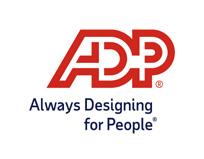
Global employment partner Omnipresent provides techenabled business solutions combined with personalized expertise to support hiring people globally.
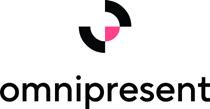
At Jobvite, our mission is to empower organizations to hire and retain the talent they need to succeed. Our goal is to deliver the world’s most innovative and essential talent acquisition solutions.

LEARN MORE
Paycom (NYSE:PAYC) offers cloudbased human capital management software to help businesses streamline employment processes, from recruitment to retirement. With a robust suite of products including payroll, time and labor management.
LEARN MORE
PARTNER WITH US
LEARN MORE
LEARN MORE LEARN MORE

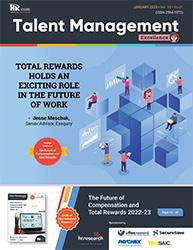



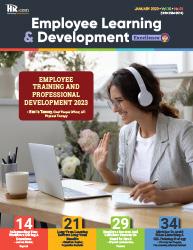

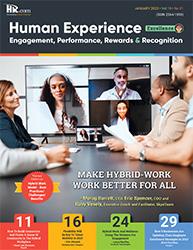

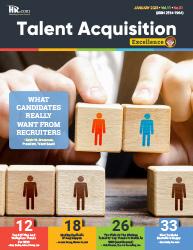



Talent Acquisition Excellence presented by HR.com MARCH 2023 49 Submit Your Articles Like to submit an article? Use our online submission form or for more information go to www.hr.com/ExcellencePublications Publications 13 Targeted Publications to Reach Your Audience Informing, Educating, Enlightening and Assisting HR professionals in their personal and professional development, the Excellence series offers high-quality content through the publications!

For more information: Phone: 1.877.472.6648 | Email: ePubeditors@hr.com | www.HR.com/epubs Talent Acquisition Excellence March 2023



 - Matt DiBara, Founder, The Contractor Consultants
- Matt DiBara, Founder, The Contractor Consultants


















 Dave Ulrich
Rensis Likert Professor, Ross School of Business, University of Michigan Partner, The RBL Group
Dave Ulrich
Rensis Likert Professor, Ross School of Business, University of Michigan Partner, The RBL Group















 Matt DiBara is Owner of DiBara Masonry, and Founder of The Contractor Consultants
Matt DiBara is Owner of DiBara Masonry, and Founder of The Contractor Consultants
















































